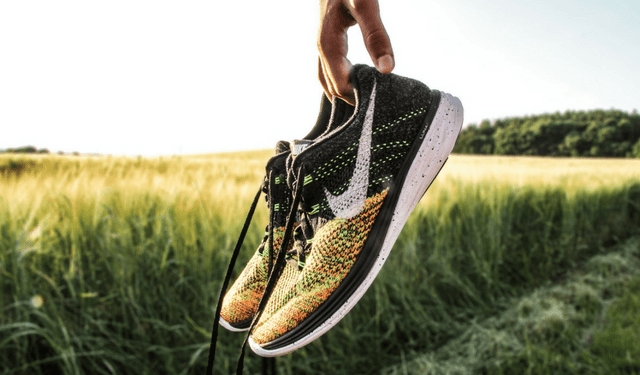
Lesson One: Always Have a Plan.
Always, always, always. I’m sure there are plenty of people who can train without a plan. I am not one of them. There are numerous benefits to training with a plan, but the main one is that it clearly defines HOW you’ll get to your end goal. You pick a plan and then you execute every day. The same is true for any PR campaign. Before you start work, you need to clearly define your objectives as well as the strategy and tactics that will get you there. In the end, you run the marathon and run the campaign, and everyone shouts “Brilliant! I could never do that.” They don’t understand the work that happened behind the scenes, and you can smile and tell them it was easy.
Lesson Two: The Small Things Matter.
The small day to day decisions play a huge role in achieving your long-distance running goals. It’s a lot easier to stay in bed at 5:30 am on a Monday morning or avoid going outside when it’s 10 degrees out, but the small decisions add up. You need to focus on the small things like intervals and stretching in order to perform well during the race. The same is true for PR. You can be the best strategist in the world, but if you make spelling mistakes or are unresponsive, it will negatively impact your client relationships. Spend time making sure that the small things are perfected. This is your foundation for making a big impact.
Lesson Three: Adapt.
News flash! New England is cold. Last year, I trained all winter, including one “memorable” 18 mile run where the temperature never got above 15 degrees and my water and gels froze. I don’t love the cold, but I was prepared for it. When race day came, it was a beautiful 70-degree day for spectators. And a horrible 70-degree day for runners. After a minor (possibly major) freak out, I analyzed my plan. I knew I could still run the 26 miles, but I had to adapt my hydration and nutrition plans as well as clothing. This happens all the time in PR. You plan your campaign, but then a product launch is delayed or an acquisition is announced or your best spokesperson leaves the company. Allow yourself the time to freak out a little, and then salvage what you can of your plan and move on. Your good ideas can be applied to something else you’re working on or shared across your agency to help your coworkers.
Lesson Four: Wear the Right Shoes.
Literally and figuratively. I didn’t start running until I was in my 30s and my way of “choosing” running shoes was to choose whatever was on sale at TJ Maxx and looked relatively cute. As you might suspect, I was plagued by injuries. Shoes matter. The nice people at your local running store can help analyze your running style, your gait and which shoes are right for you. Once I started wearing the right shoes, running became way less painful. How does this apply to your PR work? PR has changed significantly in the two decades since I began working – the media landscape is completely different, traditional newsrooms are a thing of the past, and we now have this thing called ‘social.’ It would be easy for me to pretend that I know everything there is to know about current PR trends, but the benefit of working for an integrated company is that I don’t have to. I can play to my strengths and bring in our research, marketing and digital teams to deliver the best results for clients. Don’t pretend to be someone that you’re not. Hone your expertise and stack the team with the smartest people you know.

Lesson Five: Pain is Inevitable, Suffering Optional.
In his book, What I Talk About When I Talk About Running, Haruki Murakami says, “Pain is inevitable. Suffering is optional. Say you’re running and you think, ‘Man, this hurts, I can’t take it anymore.’ The ‘hurt’ part is an unavoidable reality, but whether or not you can stand anymore is up to the runner himself.” Running a marathon will hurt. It puts wear and tear on your body, and you will hit the wall. You have to have the right mindset to get through it. We’ve all heard the cliché, “if it was supposed to be fun, they wouldn’t call it work.” Regardless of whether or not you believe that, in PR, as in all client-serving jobs, there will be days when you question why you do it. Again, mindset is key. It’s easy to get wrapped up in a bad day. Allow yourself to wallow, but then move on. Focus on the big picture.
Lesson Six: Learn from people who are ‘better’ than you.
I am a slow runner. When I start a marathon, the elite runners are well on their way to finishing. I will probably never ‘win’ a race unless I can hold out and be one of those 95-year-old runners taking the division title because she’s the only one in it. Over the years, I’ve had the chance to train and relay with runners that are much faster and stronger than me. Intimidating? Yes. Inspiring? Also, yes. The same is true of my PR career. I have worked with everyone from Nobel Prize winners to start up founders to true digital natives. Have I been intimidated? Absolutely. But there’s always something to be learned from the team around you, and I try to take that other old cliché, “if you’re the smartest person in the room, you’re in the wrong room” to heart. Your coworkers who are ‘smarter’ than you should motivate you, not scare you.
Lesson Seven: Data is your friend.
Over my years of long-distance running, I have learned to understand my body and what works for me, but I’ve also been aided by a number of apps that help me monitor my heart rate and my running pace. I’ve used all of this to make changes to my training routine and adapt when needed. To quote a recent LEWIS whitepaper, the PR industry isn’t shy about demonstrating the challenges around demonstrating ROI. The industry is, however, getting better about using digital data to help define metrics, account plan, and optimize campaigns. Clearly showing your value to clients using data will be key to future success.
Lesson Eight: The training is the real marathon.
When I first started long-distance running, friends told me that running a marathon would be easy (relatively) after putting in the training time. You dedicate four months of your life (between 64 and 80 training runs depending on your plan) to this goal. The race itself celebrates all that. I’ve run 5 marathons so far, and I find this to be true. All you need to do on race day is put one foot in front of the other and finish. This is also true of any large PR campaign or event that I’ve worked on. The real work is in the preparation. The better you plan and prepare, the easier it gets.
Click here to learn about the services that LEWIS offers.



